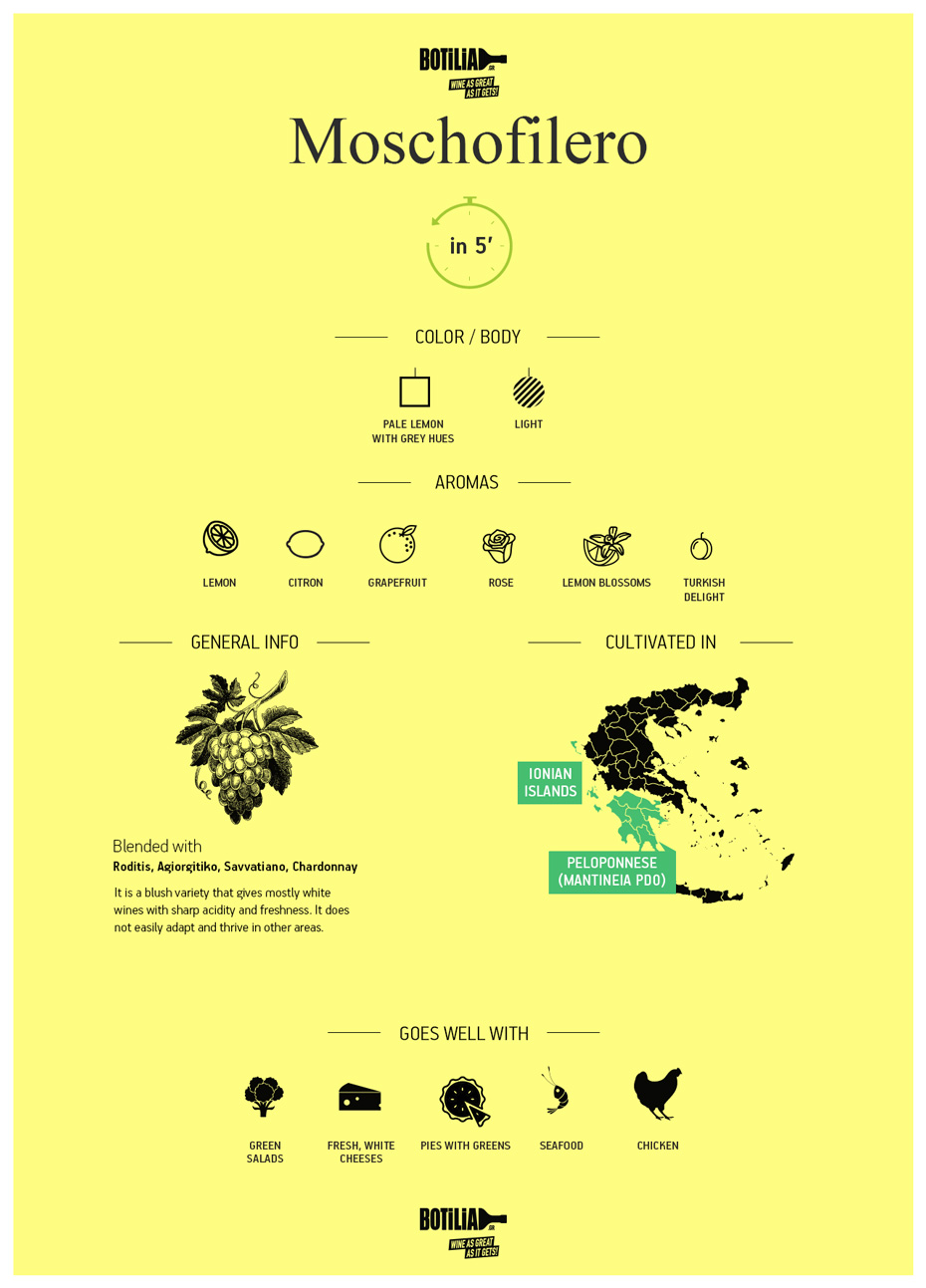MOSCHOFILERO IN 5'!

General info
Its characteristic is the blush color of the skin which is sometimes betrayed by the soft, salmon hues it gives to some wines. When vinification is strictly white, it gives silver-gray hues to the wine. It has been identified with the plateau of Mantineia and the white PDO Mantineia wines. Moschofilero covers 85% of Mantineia's vineyard.
Besides white wines, it also gives very aromatic rosés with a soft rosé - salmon color but also impressive, sparkling wines with the traditional method of Champagne.
Characteristics
White wines from Moschofilero are almost transparent in color with gray or salmon reflections, medium (+) or high acidity and light body. Its aromas are intensely floral (rose, jasmine, lemon blossom) and fruity (citrus, green apple). Usually it is unoaked because its thing is freshness, but lastly some use the touch of oak or battonage with the fine lees. This results in wines with a fuller body, oily texture and bready flavors.
Roses, on the other hand, are more fruity with aromas of white cherry, pink grapefruit, lime, red rose, Turkish delight and caramel. Sparkling wines from Moschofilero have unique finesse and balance, especially if they are made by the traditional method, as they combine splendidly the autolytic aromas with the fine, aromatic character and acidity of the variety.
Combination with food
Moschofilero definitely loves the acidity and goes well with all kinds of salad as it can stand next to a tangy vinaigrette. Every dish with lemon fits like a glove, from lemony chicken to steamed mussels with lemon. Another interesting combination is with fresh white cheeses that have acidity such as xinomyzithra or galotyri. The rosé versions are perfect for vegetable stews with tomato or lemon and pasta with light vegetable sauces. Sparkling wines go well with fried seafood such as shrimp and squid, but also with clams like vongole.
Eva Markaki
Wine Geek


